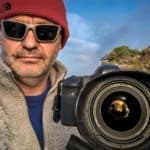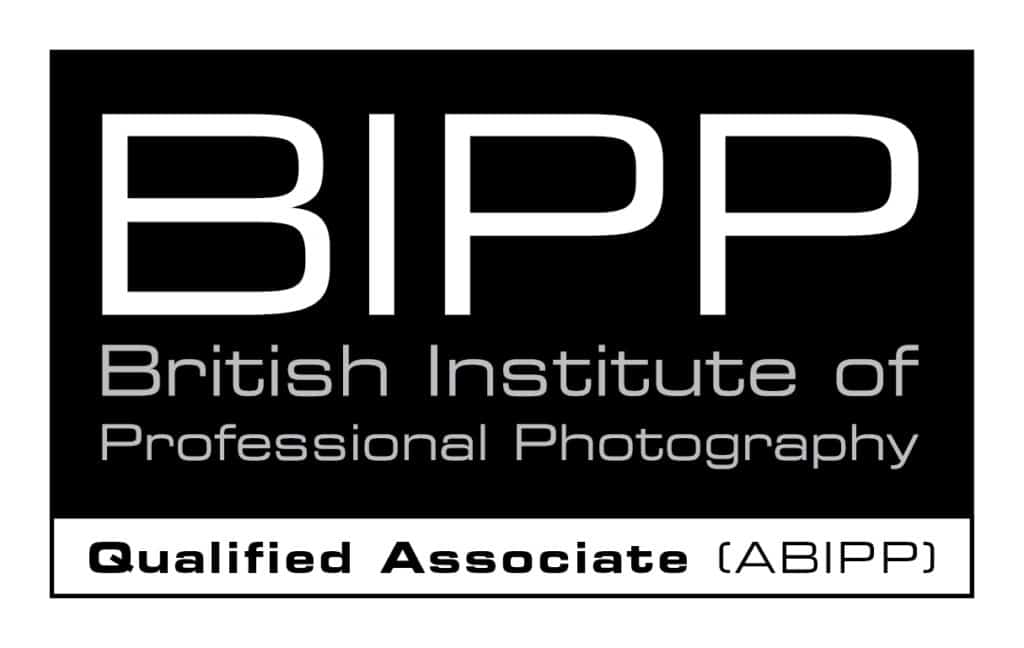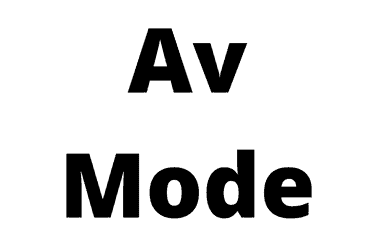There are so many camera modes on DSLR and mirrorless cameras these days, so how do you know which mode to use?
For architectural and building photography the best picture mode to use is Av Mode. Av Mode allows the photographer to select the aperture, with the camera automatically selecting the shutter speed to give a correct exposure. When photographing a building the aperture is set by the photographer, with the shutter speed changing from photo to photo to give the correct exposure.
OK, nice and simple. Av Mode is the mode of choice for architectural, construction and real estate photographers. Av Mode is the mode of choice when taking photos of buildings.
Let me tell you why. But first.
Who am I?
I am Rick McEvoy, and I specialise in photographing buildings.
I am a photographer, blogger, podcaster and photography educator. I am all things at the splendid Photography Explained Podcast, the podcast where I explain one photographic thing per episode in plain English in less than 10 minutes (ish) without the irrelevant details.
I am based in the UK and having been doing this stuff for many, many years. And I am professionally qualified in both photography and construction, so I do know this stuff ok?
OK – what exactly is Av Mode?
Well the Av bit stands for aperture value. On my Canon 6D it is called Av. Well when you check the manual it is actually called Aperture Priority AE. AE stands for Auto Exposure. Aperture Priority another name for Av mode.
So Av stands for Aperture Priority AE. Oh dear, it all gets rather complicated doesn’t it?
On other camera systems I believe it is called A.
A for Aperture
Whatever it is called, A for aperture is the important thing. That makes sense. Aperture priority. Aperture has priority over other things, principally the shutter speed.
You set the aperture and the camera sets other stuff to give you the correct exposure.
How do I use Av Mode?
This is what the Canon 6D manual says.
“In this mode, you set the desired aperture and the camera sets the shutter speed automatically to obtain the standard exposure suiting the subject brightness. This is called aperture-priority AE. A higher f/number (smaller aperture hole) will make more of the foreground and background fall within acceptable focus. On the other hand, a lower f/number (larger aperture hole) will make less of the foreground and background fall within acceptable focus. <AV> stands for Aperture value (aperture opening).
Thank you Canon
I love Canon. They explain things so well, which is why I like to use extracts from my Canon 6D manual, as they have done such a wonderful job of explain things.
Although the aperture-priority AE thing could be confusing.
One thing that I want to pick up on there is the term “standard exposure”.
Standard exposure?
Yes, “standard exposure suiting the subject brightness”. This refers to the fact that the camera is making a judgement on what the correct exposure is based on the metering and the light that is hitting the sensor.
You, the photographer, might have to adjust this. See, just because we are using AV Mode doesn’t mean that we don’t have to check the exposure.
If the “standard exposure” gives an underexposed image, that is one that is too dark, you will need to make an adjustment to let more light in.
And if the photo is overexposed, too light, you will need to make an adjustment that reduces the amount of light that gets in.
How do I do this?
When I am using AV Mode, to adjust the exposure I use Exposure Compensation. This is quickly set by rotating the wheel on the back of the camera.
How do I get the exposure correct using Av Mode?
Read on, I cover that in a bit.
Why is the aperture so important?
The aperture determines a few things.
Sharpness
Every lens has an aperture which gives the sharpest images. On my go to lens, the Canon 17-40mm F4L lens, this is F8. F8 gives me the sharpest image, and also the minimum optical errors.
Yes camera lenses are very complex, and you can get optical errors with most lenses.
Shoot at maximum aperture and minimum aperture and you get less sharp images with the potential for more lens errors.
Depth of field
Depth of field is the amount of a photo that is sharp from front to back.
The depth of field is directly related to the aperture and the focal length used. The smaller the aperture, meaning the largest aperture value number and the smallest opening on the lens, the more depth of field you get.
And conversely, with a larger aperture, smaller number, largest opening in the lens, you get less depth of field.
I want to choose sharpness and depth of field
When I am using Av Mode I am consciously selecting the sharpness and the amount of depth of field, and this is the point. Av Mode allows me to select the parameters that are important to me.
When you are taking photos of buildings you always, without exception, want the sharpest photos that you can get. You also want the minimum amount of lens errors.
And you also want everything sharp and in focus.
What about the shutter speed then?
Well when I am taking photos of a building I normally use a tripod. The subject is not moving, and neither is my camera. So shutter speed is much less important than the aperture. I will touch on handheld shooting shortly.
The shutter speed is selected by the camera to give the correct exposure. But it is not quite that simple. The standard exposure might not be correct for the subject matter, i.e. a building, so this is what I do.
I use auto-bracketing
I will write about this in another post – but I use auto-bracketing to get over the problem of getting the exposure correct and getting all the lights and all the darks correct.
Why do I use a tripod?
To get tack sharp images. And using a tripod help me with my compositions. And it makes me look good. No just kidding on the last one. But yes, I take every photo on a tripod if I can.
What about handheld?
Simple. Set the ISO so that you get a fast enough shutter speed to get tack sharp photos. You know what the aperture is, that is not changing, so you need to work out the ISO that you need to give you a fast enough shutter speed for the light.
That or use a tripod, which is my preference.
But when I am shooting handheld I will stick with AV Mode, you just need to keep an eye on this in case the light changes.
And when you get inside a building you will probably have to make more adjustments.
What aperture do I use?
F8 most of the time. That gives me the sharpest images, and also the depth of field that I need. And it also gives me pretty decent shutter speeds for handheld shooting if needed.
And if I need more depth of field for a shot I will change to F16.
What about the ISO?
When I am shooting on a tripod I use the lowest ISO that I can, which is normally 100. When shooting handheld I use the lowest ISO that gives me a fast enough shutter speed to get sharp images.
And the higher the ISO the greater the chance of noise and other bad stuff. But a bit of that is better than a blurry photo, let’s not forget that!
Do I use any other modes?
I sometimes use manual mode, if the lighting requires it, or if I want to. And when I am wandering around nice places on holiday I might use Program mode, but that is pretty much it for me.
Am I boring?
Yes, my camera settings and how I take photos is quite boring, I accept that. But these settings work for me, and have done so for many, many years.
OK?
OK – related viewing
There is a video for this post on my You Tube channel titled, erm Which Mode Is Best For Architectural Photography And Building Photography? Well what were you expecting the title to be exactly?
Related reading
There is lots of related stuff, just hit the search thingy, and if you can’t find what you are looking for just get in touch and I will gladly help you.
Get a weekly email from me to you
Yep, if you want to receive an email from me every week then fill in the form on this page – there will be one somewhere. And in return I will send you a splendid Lightroom thing, and you will receive my thoughts straight to your inbox on a Friday afternoon. Which is nice.
OK – how can I find out more about this stuff?
Simple.
Get in touch with me – email me – sales@rickmcevoyphotography.co.uk
Check out my website Rick McEvoy Photography
Check out my splendid Photography Explained Podcast
Get in touch, ask me a question that I can answer on my blog or podcast, or just say hi – it would be great to hear from you.
Thanks for visiting my small but perfectly formed website, and I look forward to hearing from you.
Cheers from me Rick



